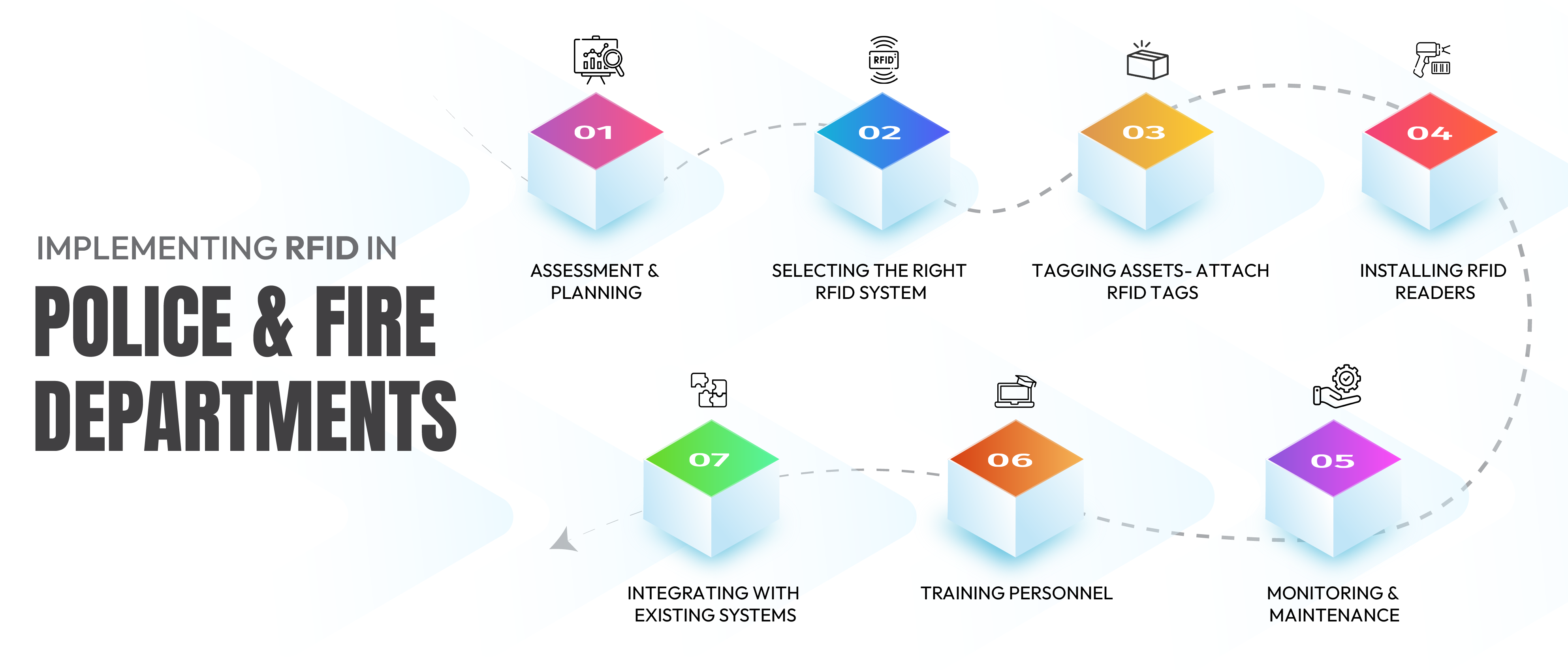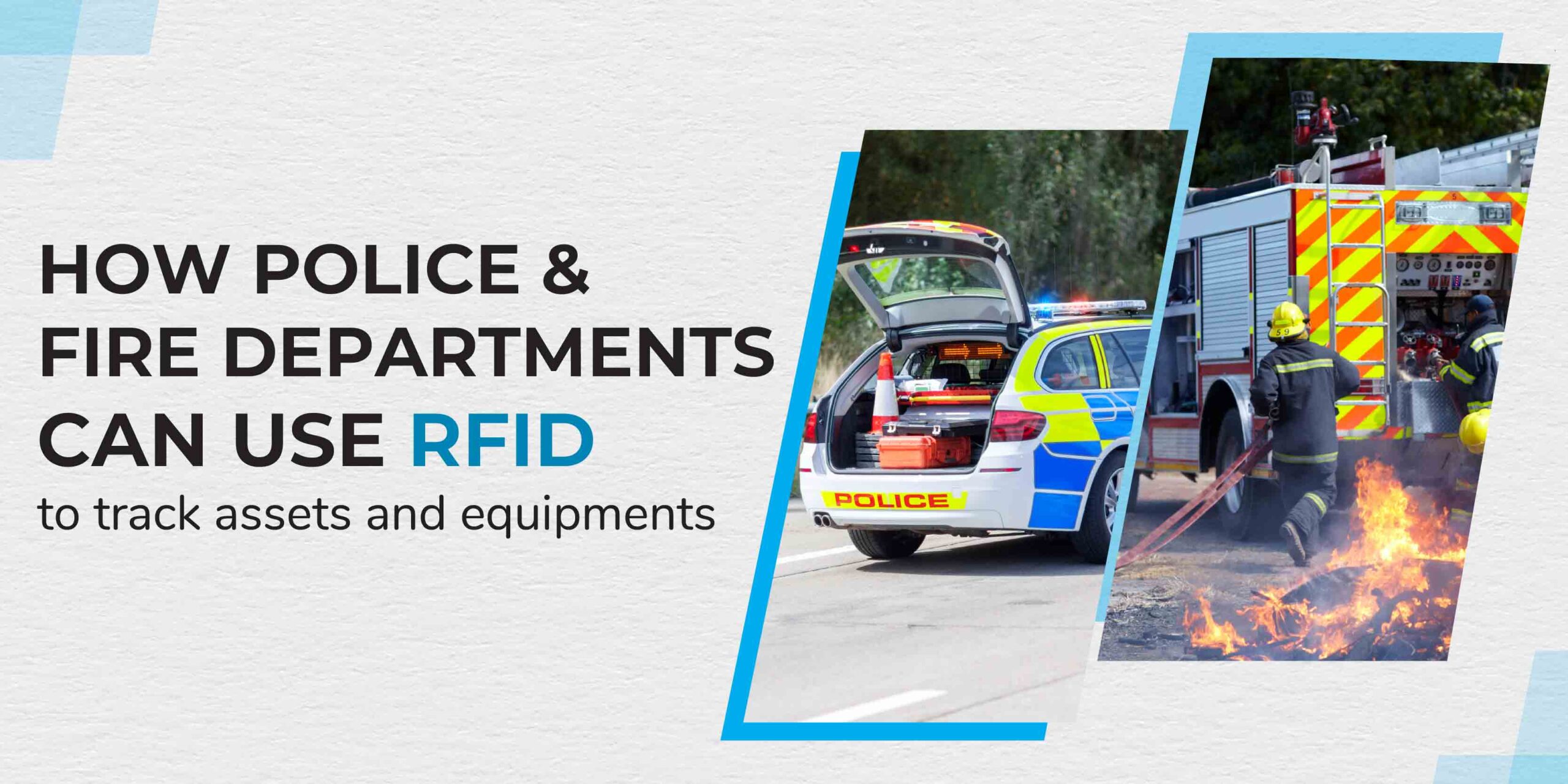Radio Frequency Identification (RFID) technology has revolutionized RFID asset tracking across various industries. Police and fire departments, responsible for maintaining a vast array of equipment and assets, can significantly benefit from the implementation of RFID systems. This article explores how RFID technology can enhance the efficiency, accuracy, and security of asset tracking for police and fire departments.
What is RFID?
RFID (Radio Frequency Identification) uses electromagnetic fields to automatically identify and track tags attached to objects. The system comprises RFID tags, RFID Readers, and a TagMatiks RFID software application. Tags can be passive (no power source and activated by the RFID reader) or active (battery-powered, with a longer range).
Benefits of RFID for Asset Tracking in Fire and Police Departments
Improved Inventory Management: RFID provides real-time visibility into the location and status of equipment, ensuring accurate inventory counts and reducing the risk of lost or misplaced items.
Enhanced Efficiency: Automating the check-in/check-out process for equipment saves time and reduces manual errors.
Increased Accountability: Detailed logs of equipment usage can be maintained, improving accountability and responsibility among personnel. Better Maintenance Management: RFID can Asset tracking maintenance schedules and alert staff when equipment requires servicing, ensuring optimal performance and longevity of assets.
Enhanced Security: RFID can help prevent theft and unauthorized access to sensitive equipment by triggering alarms when items are moved without proper authorization.
Applications of RFID in Police Departments
Weapon and Ammunition Tracking: RFID tags can be attached to firearms and ammunition to monitor their usage and ensure they are returned after duty.
Uniform and Gear Management: Officers’ uniforms, body armor, and other gear can be tagged to streamline the issuance process and ensure that all items are accounted for.
Vehicle Fleet Management: Police vehicles can be equipped with RFID tags to monitor their location, usage, and maintenance status.
Evidence Management: RFID technology ensures the integrity of evidence by tracking its chain of custody, reducing the risk of tampering or loss.
K-9 Units: Tracking the equipment used for K-9 units, including leashes, harnesses, and training gear, ensures that all items are properly maintained and available when needed.
Applications of RFID in Fire Departments
Personal Protective Equipment (PPE) Tracking: Firefighters’ PPE, including helmets, gloves, and boots, can be tagged to ensure availability and compliance with safety regulations.
Tool and Equipment Management: Tools such as axes, hoses, and thermal imaging cameras can be tracked to ensure they are returned and properly maintained after use.
Apparatus and Vehicle Tracking: Fire trucks and other emergency vehicles can be monitored for location, usage, and maintenance needs.
Oxygen Tank and SCBA Management: RFID can track the status of oxygen tanks and self-contained breathing apparatus (SCBA), ensuring they are refilled and inspected regularly.
Training Equipment: RFID can help manage training equipment, ensuring that it is properly stored and available for training sessions.
Implementing RFID in Police and Fire Departments

Assessment and Planning: Identify the specific needs and goals of the department. Determine which assets require tracking and the scope of the RFID implementation.
Selecting the Right RFID System: Choose between passive or active RFID systems based on range, cost, and application. Ensure the chosen system integrates with existing software and databases.
Tagging Assets: Attach RFID tags to the identified assets. Ensure tags are durable and appropriately placed to withstand the operating environment.
Installing RFID Readers: Place RFID readers at key locations such as entry/exit points, storage areas, and vehicles to capture tag data.
Integrating with Existing Systems: Ensure the RFID system integrates seamlessly with the department’s asset management software for real-time data access and reporting.
Training Personnel: Provide comprehensive training to staff on the use and benefits of the RFID system. Emphasize the importance of accurate data entry and equipment handling.
Monitoring and Maintenance: Regularly monitor the RFID system for performance issues. Conduct periodic audits to ensure the system is functioning correctly and assets are being accurately tracked.
Case Studies
City Police Department: A city police department implemented an RFID system to track their firearms and tactical gear. This resulted in a 30% reduction in lost items and improved accountability among officers.
Fire Department: A county fire department used RFID to manage their PPE and oxygen tanks. The system ensured timely maintenance and replacement, enhancing firefighter safety and operational readiness
Challenges and Solutions
Cost: Initial setup costs for RFID systems can be high. Departments can seek grants and budget allocations to fund the implementation.
Integration with Legacy Systems: Integrating RFID with existing systems can be challenging. Working with experienced RFID vendors and IT specialists can facilitate a smooth integration.
Training and Adoption: Ensuring all personnel are trained and comfortable with the new system is crucial. Continuous training and support can help overcome resistance to change.
Durability of Tags: In harsh environments, RFID tags can get damaged. Investing in durable tags designed for such conditions can mitigate this issue. Future Trends in RFID for Public Safety
IoT Integration: Combining RFID with the Internet of Things (IoT) can provide even greater insights and control over assets.
Advanced Analytics: Utilizing data analytics on RFID-generated data can help predict maintenance needs and optimize asset usage.
Enhanced Security Features: Future RFID systems may include biometric verification and advanced encryption to enhance security.
Conclusion
RFID technology offers significant benefits for police and fire departments in terms of efficiency, accountability, and security. By implementing RFID systems, these departments can ensure better management of their assets, improve operational readiness, and enhance overall public safety. As technology advances, the potential applications and benefits of RFID will continue to grow, making it an indispensable tool for public safety agencies.
